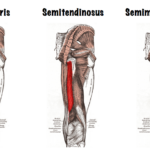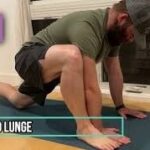Thoracic outlet syndrome (TOS) is a condition that involves the compression of nerves, arteries and/or veins in the lower neck and upper chest causing pain in the arm, shoulder, and/or neck. The most common TOS involve the brachial plexus or subclavian artery as they pass from the base of the neck to the armpit and arm.
Symptoms
Because of the complexity of the condition, symptoms can be similar to those of rotator cuff injuries, cervical disc disorders, fibromyalgia, multiple sclerosis, and complex regional pain syndrome. Symptoms can include tenderness in the sub-clavicular region, weakness and/or a “pins and needles” feeling when elevating the shoulder over head, weakness in the 5th finger, and neuropathy in one or both hands when elevating the shoulder.
Causes
The risk factors are physical trauma, congenital abnormalities, tumors compressing on nerves, poor posture causing nerve compression, pregnancy and repetitive arm and shoulder movements due to work or sports. TOS is most common in women and usually occurs between 20-50 years of age.
Treatment
Ideally, physical therapy would reduce the symptoms by strengthening upper back muscles and lengthening chest muscles, restoring normal posture. If symptoms don’t reduce, the next step can be surgery. Surgery involves the release or removal of the structures that cause compression, for example: Scalene muscles release, 1st rib resection, cervical rib excision and resection of fibromuscular bands.
Prevention
Exercises and stretches of the shoulder can help reduce the symptoms of TOS. Below are two examples of exercises one can do:
- Shoulder rolls: shrug your shoulders up, back and then down in a circular motion.
- Corner stretch: stand in a corner with your hands at shoulder height, one on each wall. Lean into the corner until feel a gentle stretch across your chest. Hold for 5 seconds. To view another Pec stretch, watch this retro video (left) we did back in 2014!
References (viewed 11/7/18)
- https://www.ninds.nih.gov/Disorders/All-Disorders/Thoracic-Outlet-Syndrome-Information-Page
- https://physioworks.com.au/injuries-conditions-1/thoracic-outlet-syndrome
- https://www.ncbi.nlm.nih.gov/pubmed/24835692
- https://academic.oup.com/ejcts/article/16/1/44/453729
- https://orthoinfo.aaos.org/en/diseases–conditions/thoracic-outlet-syndrome/
- https://www.ncbi.nlm.nih.gov/pubmed/8884673
- https://www.sciencedirect.com/science/article/pii/S0741521408017953
Image reference (retrieved 11/7/18):
- https://orthoinfo.aaos.org/en/diseases–conditions/thoracic-outlet-syndrome/
This article/video is for educational purposes only; do not attempt without your physician’s clearance. If you are in pain or injured, see your physician.
Copyright © Vidal Sports LLC 2018







